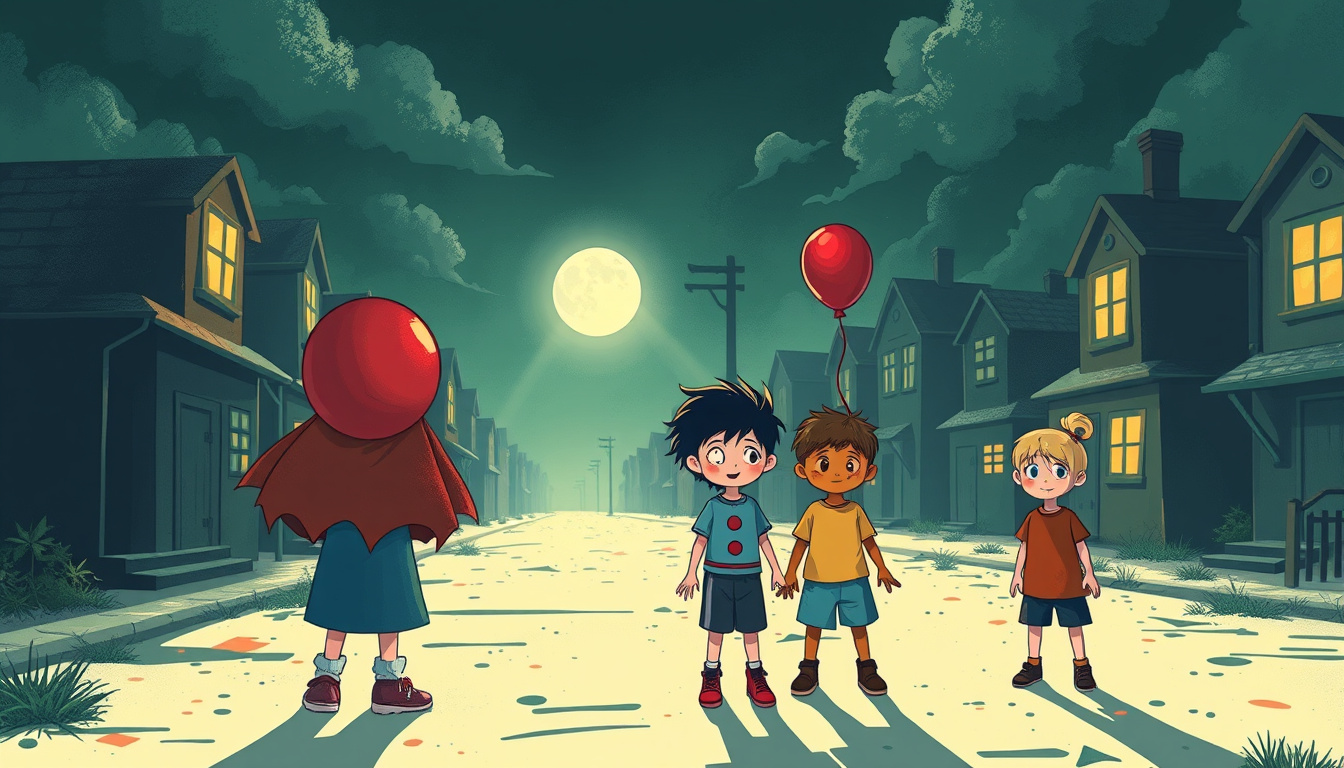Physical Address
304 North Cardinal St.
Dorchester Center, MA 02124
Physical Address
304 North Cardinal St.
Dorchester Center, MA 02124

Stephen King’s "It" is celebrated for its striking blend of horror, childhood innocence, and the complexities of adulthood. Among its many elements, the novel contains a controversial scene that often invites polarized discussions: the group sex scene involving the young members of the Losers’ Club. This scene, unlike any other in King’s work, serves as a critical and symbolic juncture in the story, marking a transition from childhood innocence to the harsh realities of adulthood.

In the novel, the Losers’ Club—a group of misfit children united by their shared traumas in the town of Derry—faces a monstrous entity they can only defeat through mutual support and strength. As they traverse the treacherous sewer system to confront Pennywise, fear and anxiety overwhelm them. Beverly Marsh, the only girl in the group, proposes that they engage in sexual acts to solidify their bond, believing it will empower them and enable their escape. This proposition unfolds in a dark, chaotic environment, heightening the scene’s intensity.
The scene is fraught with discomfort and confusion, both in its execution and the age of the characters involved. Critics argue about its implications and King’s motivations for including such a disconcerting event. While some see it as a grotesque portrayal of childhood sexuality, others interpret it as a complex metaphor for the transition to adulthood, an essential theme in King’s narrative.
The scene has been scrutinized for its disturbing nature. Critics have highlighted that it reflects the tangled layers of childhood experiences intertwined with trauma and emerging sexuality. Beverly’s actions can be viewed as both an assertion of agency and a response shaped by her own abusive past, having been subjected to sexual violence by her father. This layered portrayal complicates the notion of consent among the children and raises questions surrounding power dynamics, innocence, and the perceptions of sexuality.
Some readers, as noted in discussions across platforms like Reddit, have approached the scene with an open-minded perspective, suggesting that it should not be viewed merely through a lens of shock or disgust. Instead, they advocate for a deeper understanding of the scene’s symbolic significance—it portrays an essential, albeit troubling, rite of passage, emphasizing the fears and uncertainties surrounding the transition from childhood to adulthood. Critics point out that the scene encapsulates the characters’ collective trauma and serves as a narrative device for bridging the gap between innocence and the responsibilities of adult life.
King has often expressed that the harrowing scene symbolizes the loss of childhood innocence and the complexities of emerging sexual identities. He posits that the act, while disturbing, serves to underscore the bond the children share and the profound emotional challenges they face as they confront not only the supernatural evil of Pennywise but also the sinister realities of their own lives. This duality is a hallmark of King’s writing, where horror intertwines with real-world issues, enhancing the psychological depth of his characters.
Despite the controversy, many fans argue that such scenes challenge the reader to question societal norms regarding childhood, sexuality, and trauma. The discomfort that arises from reading this passage reveals much about cultural perceptions of innocence and the sexual awakening that is part of growing up. Some interpret Beverly’s initiative as her attempt to reclaim her power in a world that has often stripped it away, albeit through a means that raises ethical questions.
The sex scene in King’s "It" remains one of the most debated and misunderstood aspects of his expansive body of work. It exemplifies the author’s fearless examination of uncomfortable themes, illustrating how childhood fears morph into adult realities. Regardless of individual interpretations, the scene serves as a poignant reminder of the thin line between innocence and experience, and the tumultuous journey that defines the transition from childhood to adulthood.
By diving deep into this controversial moment, we can better appreciate King’s nuanced exploration of trauma, friendship, and the inevitability of change, highlighting how such narratives contribute to a broader understanding of humanity’s complexities.
If you enjoyed this post and you’re craving more stories that sizzle, check out my books at Arizona-Jewel. From slow burns to explosive encounters, there’s a story waiting to sweep you away.